How to find new quantum materials
- D-CHAB
- Highlights
What if electricity could be transported without loss or if high performance quantum computers could be realized? Such future technologies require new materials with new properties. Professor Dr. Fabian von Rohr is working with his group at the University of Zurich to discover them by combining chemical and physical methods to create a holistic and thus interdisciplinary design concept. For his research, he will receive the Ruzicka Prize 2021.
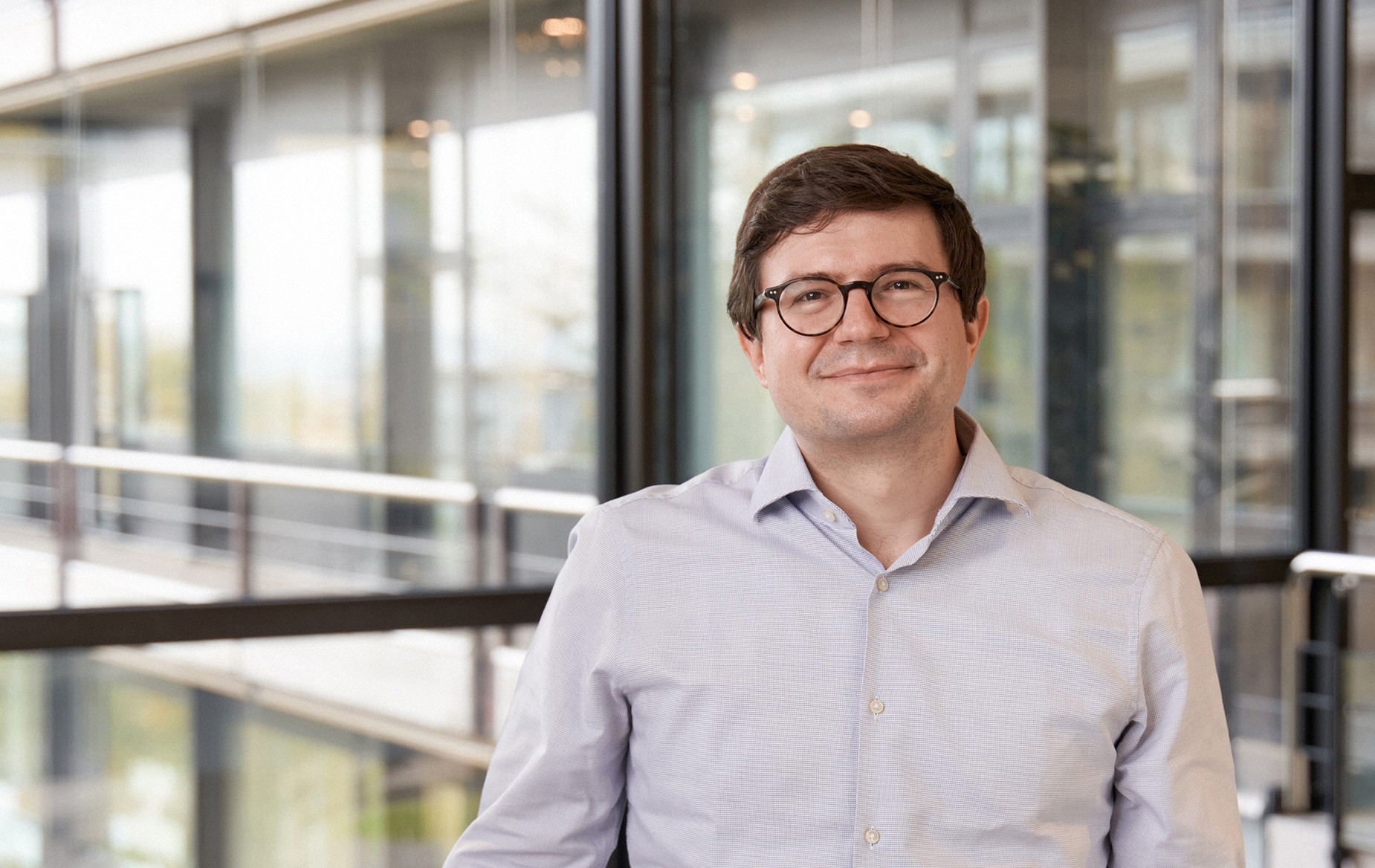
Why quantum materials? Fabian von Rohr thinks about it briefly, while glancing at the flashing microphone at the table. "We are surrounded by materials," he finally says, "they are the engine of technological progress. They are so fundamental to civilization that entire ages are named after them: from the Bronze Age to today's Silicon Age." Quantum materials - the materials that will arguably replace silicon in the future as it reaches its technological limits - will help drive this progress as well. However, this is still a long way ahead because, among other challenges, they are difficult to find, synthesize, and characterize.
Their properties result from a complex interplay of factors at the atomic and electron level. Like a flock of birds, individual parts and properties form a new ensemble, creating new forms with new properties at the macro level – a behavior that is difficult to predict. To meet this challenge, Fabian von Rohr and his team are using design concepts that combine chemical and physical methods: "This has great potential, because this way we can discover things that no one has ever discovered before," he explains enthusiastically: "We're doing basic research – but if we find the right material, it could have a huge impact on our daily lives."
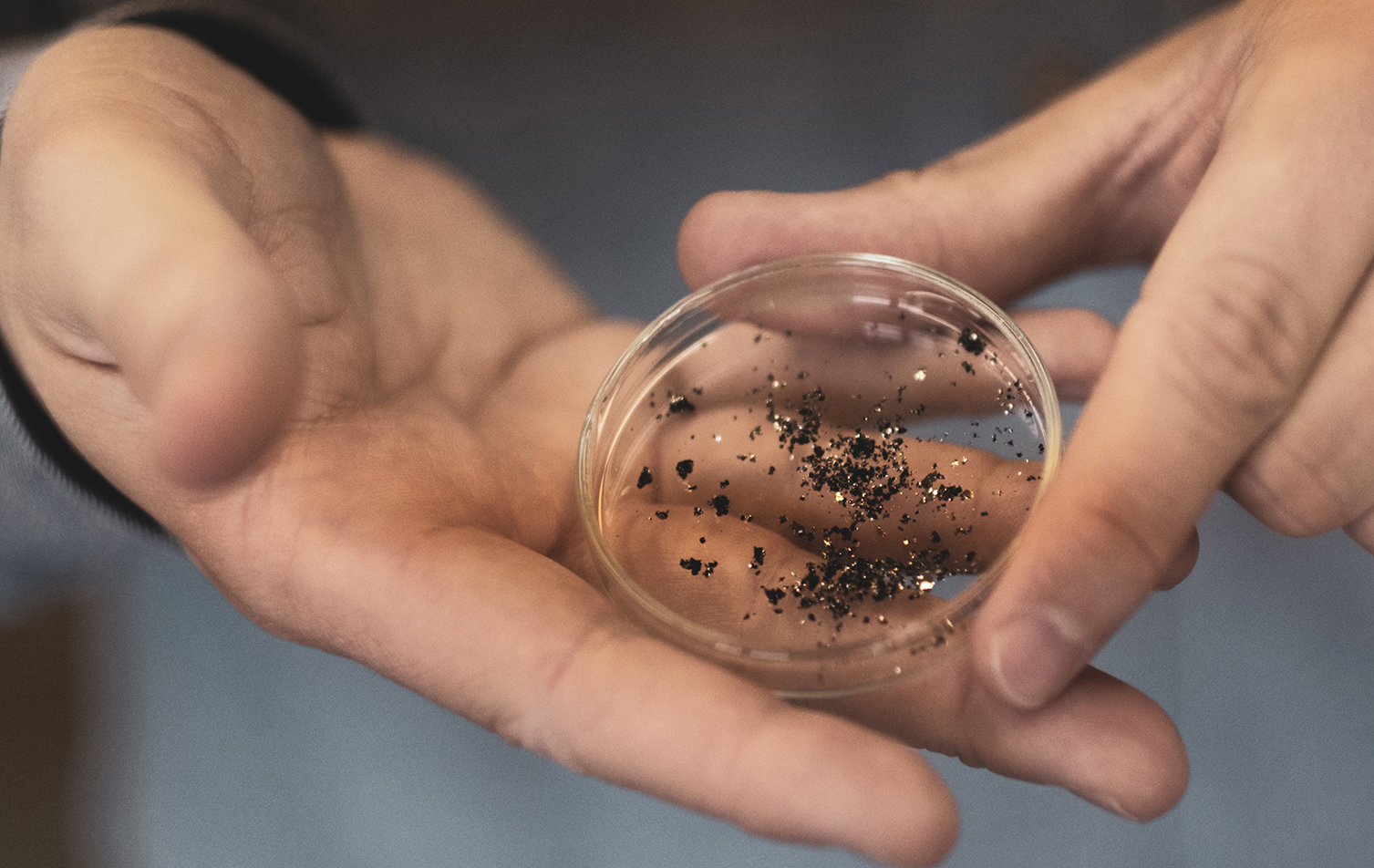
Chemistry and physics go hand in hand
For Fabian von Rohr, chemistry and physics go hand in hand, although the professionals of the respective disciplines often speak a somewhat different language. This interdisciplinary perception forms the basis of his research and has shaped his career. The native of the canton of Solothurn studied Interdisciplinary Sciences at the ETH Zurich. He conducted his Master's thesis in the field of solid-state chemistry under the supervision of Robert J. Cava at Princeton University, USA, one of the world-leading researchers in this field. "After this impressive experience, it was clear to me that I wanted to do forefront research in materials discovery," von Rohr recalls. Back in Europe, he met Andreas Schilling at the University of Zurich (UZH), who still holds the record for the discovery of the ceramic superconductor (a so-called cuprate) with the highest transition temperature at ambient pressure.
Superconductors are materials that have no electrical resistance below a critical temperature. They are currently used in particular to generate strong magnetic fields, for example in magnetic resonance imaging (MRI), nuclear magnetic resonance (NMR) and particle accelerators. My doctoral thesis in the field of superconductors ended up being a cross-disciplinary project: At ETH Zurich, I synthesized the compounds with Reinhard Nesper in chemistry and then measured them at UZH in physics with Andreas Schilling," says Fabian von Rohr. As an SNSF Eccellenza Professor at the Institute of Chemistry at the University of Zurich, he is currently leading his own research group and still finds "that chemistry and physics at UZH as well as at ETHZ complement each other excellently and can benefit from an in-depth exchange."
Finding new materials through feedback loops
How does one find quantum materials that could possibly be new magnets or superconductors? To understand the dimensions of this needle in a haystack, picture the following: To find the cuprate superconductor YBCO (yttrium barium copper oxide) without prior knowledge, it would take 27,000 years even if one could produce and characterize the incredible number of 105 samples per day (see M. Jansen, Angewandte Chemie 2002). "As a result, we need more efficient methods to streamline the discovery process," explains Fabian von Rohr: "In fact, in our research, we're aiming to identify potential functional materials by understanding the interplay of composition, structure, and properties."
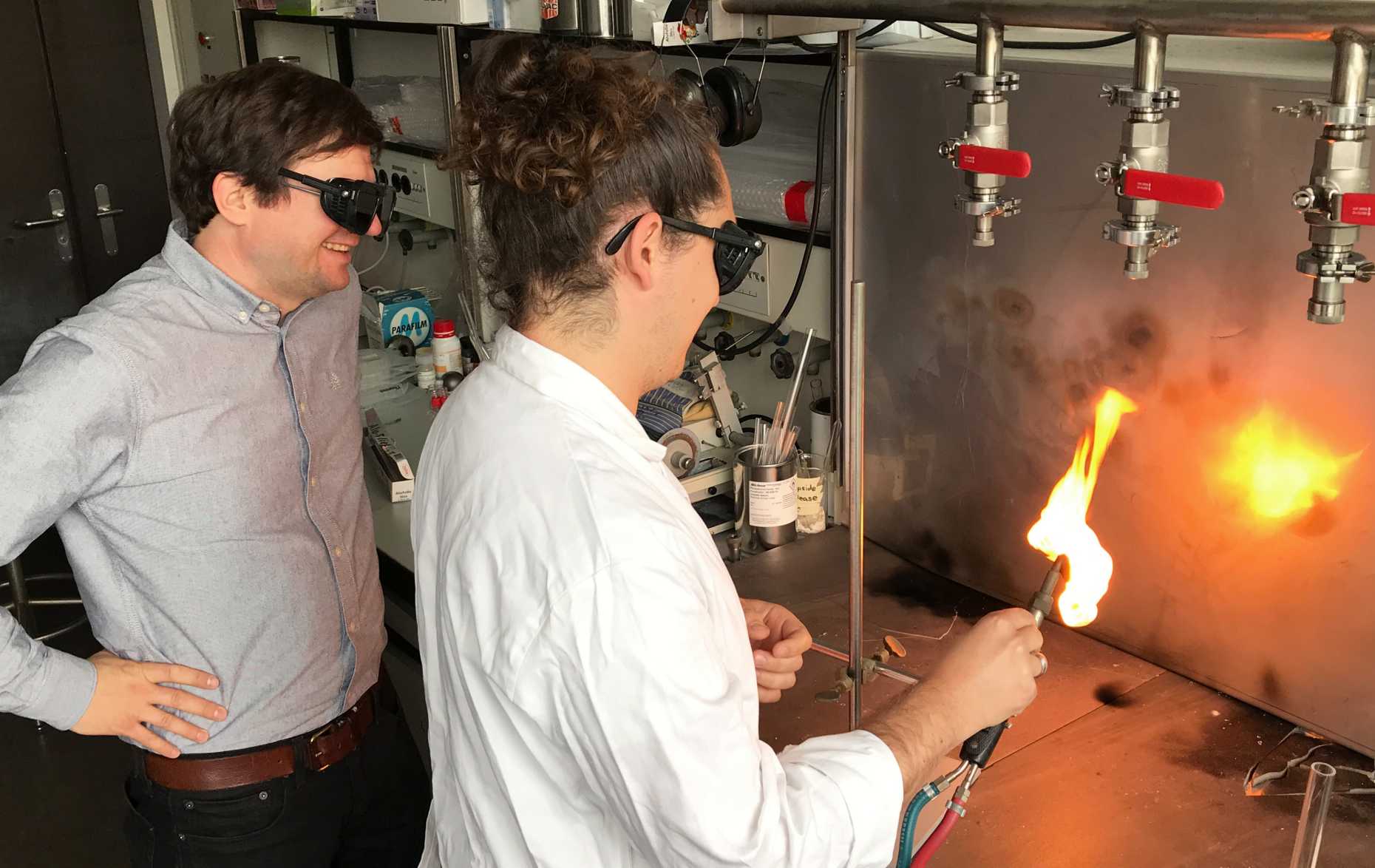
In practice, it goes like this: Once a new idea has been developed – based for example on a structural feature – the discovery process begins with the synthesis of the respective materials. On a side note: Creating something new from known basic building blocks is an essence of chemistry for von Rohr. Subsequently, the electronic properties are examined, including orbital and band structures, which provide information about the non-interacting electrons. Furthermore, the crystal structures of the new compounds are examined to identify the effects of replacing elements with others, and how the properties might be altered. Each chemical and physical properties’ measurement thus provides crucial feedback. On this basis subsequent, refined steps follow again, new syntheses, new structural analyses, etc., until ideally one discovers what no one has discovered before.
For instance, Fabian von Rohr came across β-germanium selenide (β-GeSe) after comparing the ionic radii and orbital sizes of germanium selenide and tin selenide (both promising materials for photovoltaic applications) and finding that the compounds should be structurally close to the structure of NaCl, rather than to the one of black phosphorus. Using a high-pressure synthesis with a pressure of 6 GPa (which is about 60 thousand times the pressure at the Earth's surface) and a temperature of 1200 °C, he ultimately obtained previously unknown crystals (see F. von Rohr et al 2017):
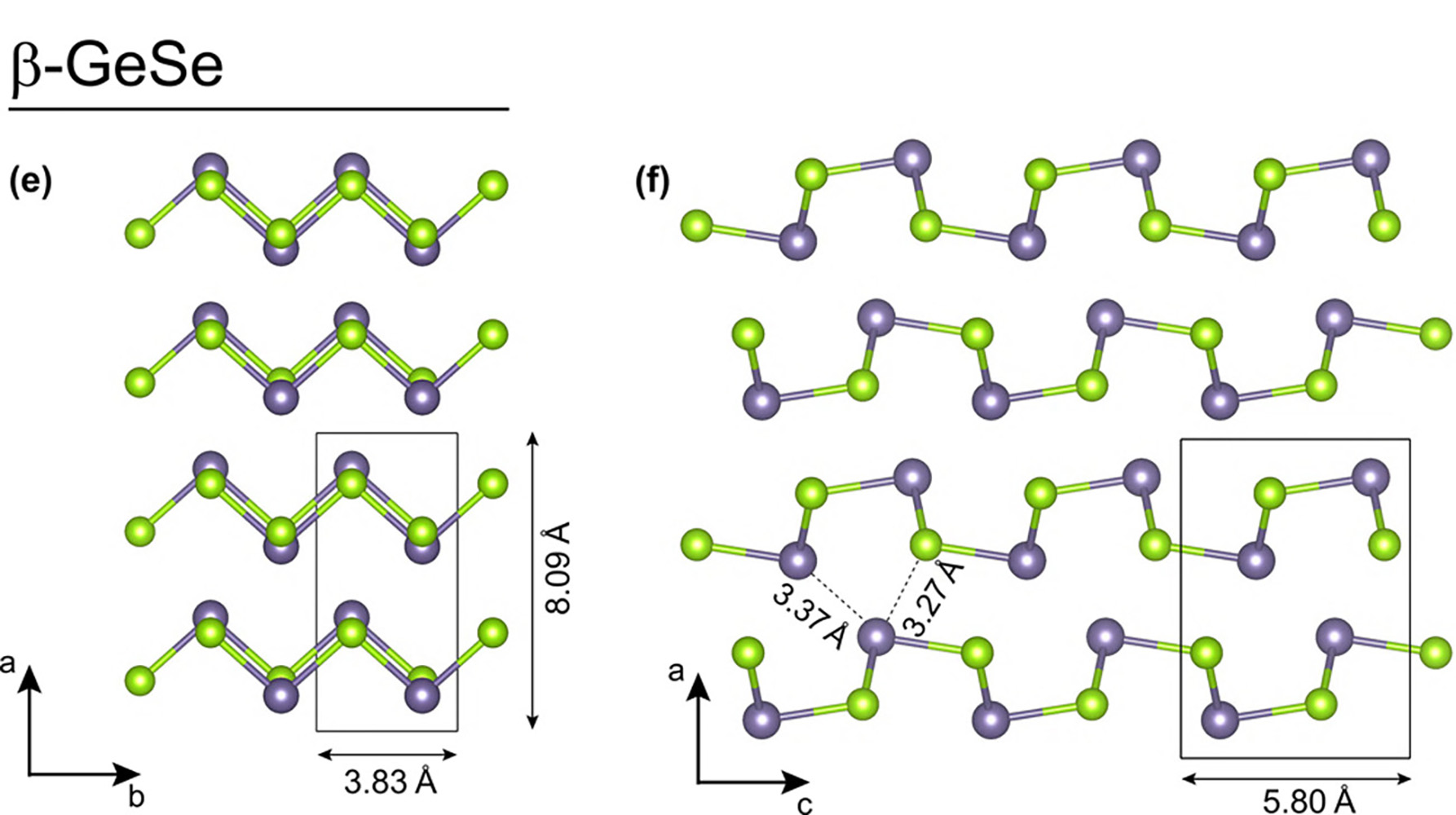
The crystals didn`t have a NaCl-like structure, but they had an entirely new structure type that can be taken apart, layer by layer - a valuable property that allows for rich chemical variability. "It is possible, for example, to exfoliate this compound down to monolayers or to intercalate lithium between the layers. Such methods allow the number of electrons to be changed in a controlled manner and the properties to be precisely altered,” explains von Rohr.
Recently, he and his group also succeeded in finding special superconducting properties in so-called η-carbides, in particular niobium-4-rhodium-2-carbide (Nb4Rh2C1-δ). This compound has the same critical temperature as the niobium-titanium commonly used in NMR, but at the same time it has an extremely high upper critical field, an important quantity for the realization of improved superconducting magnets. (see K. Ma et al 2021).
“The key question is: What does the chemistry ultimately tolerate? And, of course, we are trying to push the limits of what is possible with advanced synthesis processes," explains von Rohr. "Chemical complexity is particularly relevant in this context," von Rohr emphasizes. "For example, a niobium compound does not have to have the same properties as the isostructural tantalum compound. Even with very similar band structures of elements, a slight difference can already strongly influence the properties of a material." These challenges make things fascinating, he said.

A case for teamwork and creativity
For someone on his own, the search for quantum materials would not be feasible, "it's a team effort," von Rohr emphasizes. It is a privilege to be able to work and teach together with his group and collaborators. "We work creatively by debating about publications and sharing new ideas, by discussing structures and data, every day. I enjoy this dialog, which is also especially important for the process when a publication is emerging from the raw data. It's fantastic to be the first to hold a new substance in your hands, a new superconductor or magnet. As fundamental researchers, we always aim to discover the most exciting materials with the most interesting properties, and hope that there are people out there who will develop them further."
From spring 2022, Fabian von Rohr is going to pursue this goal in Geneva, as an Associate Professor at the Department of Quantum Matter Physics. The moving boxes are already piling up in his laboratory and presumably soon at home as well because his wife – she is a physicist and negotiation scientist – and his two sons will be joining him. Before that, however, Fabian von Rohr will receive an award at the institution where his career started. On November 18, he will be awarded the Ruzicka Prize 2021 at ETH Zurich for his achievements in the field of quantum materials.
"I still remember how they put up the posters on the wall. As a student, this prize seemed so far away, and now I have received it myself. It's really something very special."Fabian von Rohr
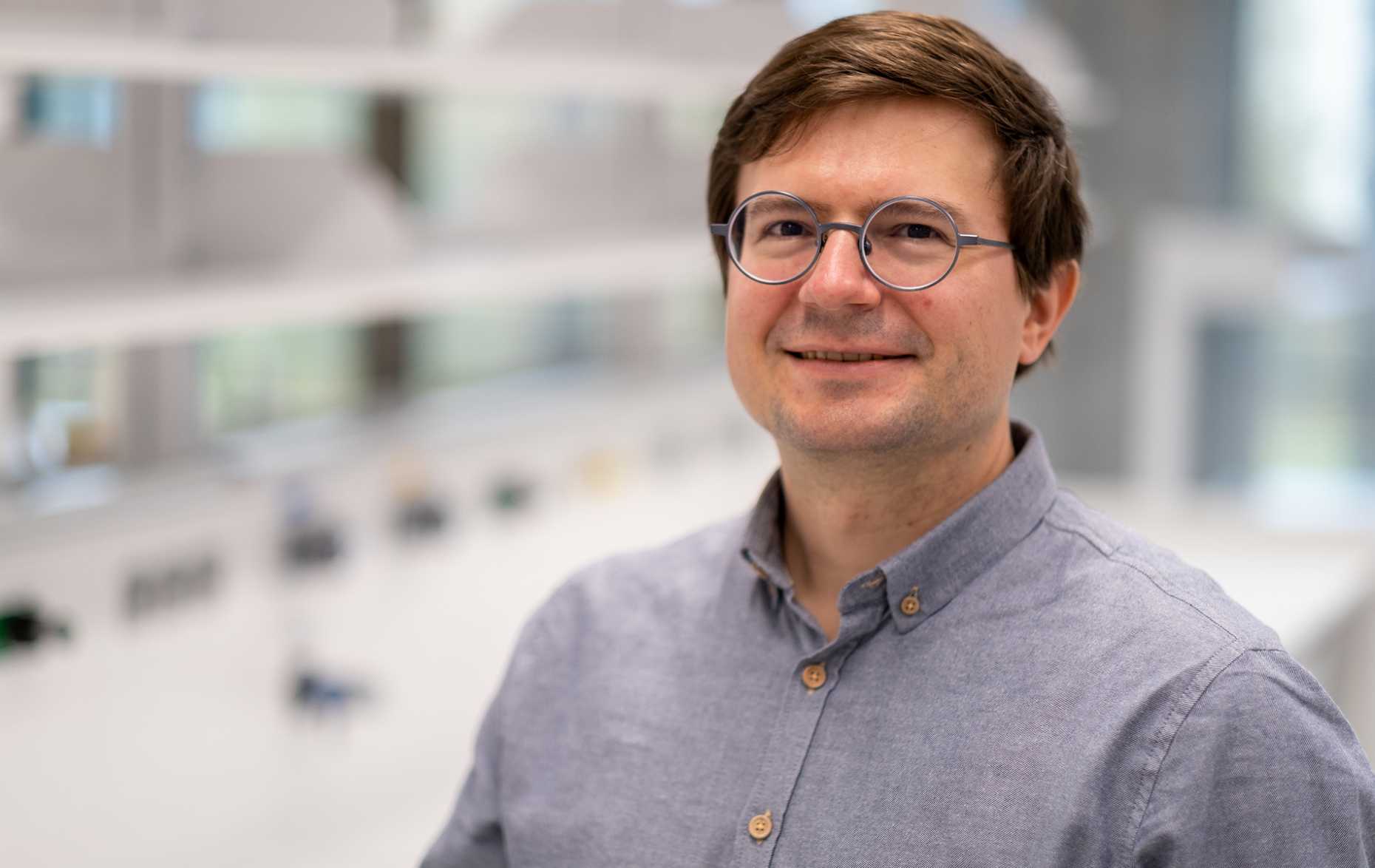
Further information
Download Flyer Ruzicka Prize 2021 (PDF, 2.8 MB) (more information on the awardee)
Selected Publications:
Martin Jansen: A Concept for Synthesis Planning in Solid-State Chemistry. Angewandte Chemie Oct 2002 114(20):3896-3917 external page https://onlinelibrary.wiley.com/doi/10.1002/1521-3773(20021018)41:20%3C3746::AID-ANIE3746%3E3.0.CO;2-2
Fabian O. von Rohr, Huiwen Ji, F. Alexandre Cevallos, Tong Gao, N. Phuan Ong, and Robert J. Cava: High-Pressure Synthesis and Characterization of β-GeSe—A Six-Membered-Ring Semiconductor in an Uncommon Boat Conformation. Journal of the American Chemical Society 2017 139 (7), 2771-2777 external page DOI: 10.1021/jacs.6b12828
KeYuan Ma, Karolina Gornicka, Robin Lefèvre, Yikai Yang, Henrik M. Rønnow, Harald O. Jeschke, Tomasz Klimczuk, and Fabian O. von Rohr: Superconductivity with High Upper Critical Field in the Cubic Centrosymmetric η-Carbide Nb4Rh2C1−δ.
ACS Materials Au 2021 1 (1), 55-61 external page DOI: 10.1021/acsmaterialsau.1c00011
KeYuan Ma, Robin Lefèvre, Qingtian Li, Jorge Lago, Olivier Blacque, Wanli Yang and Fabian O. von Rohr: Synthetic control over polymorph formation in the d-band semiconductor system FeS2. Chem. Sci., 2021,12, 13870-13877 external page DOI: 10.1039/D1SC03026D
F. O. von Rohr, J.-C. OrainR. Khasanov, C. Witteveen, Z. Shermadini, A. Nikitin, J. Chang, A. R. Wieteska, A. N. Pasupathy, M. Z. Hasan, A. Amato, H. Luetkens, Y. J. Uemura and Z. Guguchia: Unconventional scaling of the superfluid density with the critical temperature in transition metal dichalcogenides. , 2019, 5(11). external page DOI: 10.1126/sciadv.aav8465